Best practices: creating the best referral experiences
With Spaaza’s API you can create your own referral user experience or use our existing, whitelabel, experience through an iFrame, or use a combination of both. Below are some considerations for any custom-built referral experiences.
We recommend creating a dedicated page for your referral campaign on your webshop and/or app. This is where people can easily initiate a referral and find any necessary information they need about the referral process.
A referral page should contain the following:
- What it takes to refer a friend
- The shareable referral code or information on how to get one. A great way to reduce friction is to include the links to share it via the most popular channels
- What the rewards are for referred and referring customer
- What conditions must be complete to earn the rewards
- Where to find more information about the referral program, e.g. link to a FAQ section
Below is an example we like from Snowe’s referral program:
Snowe’s Referral Flow - Step #1
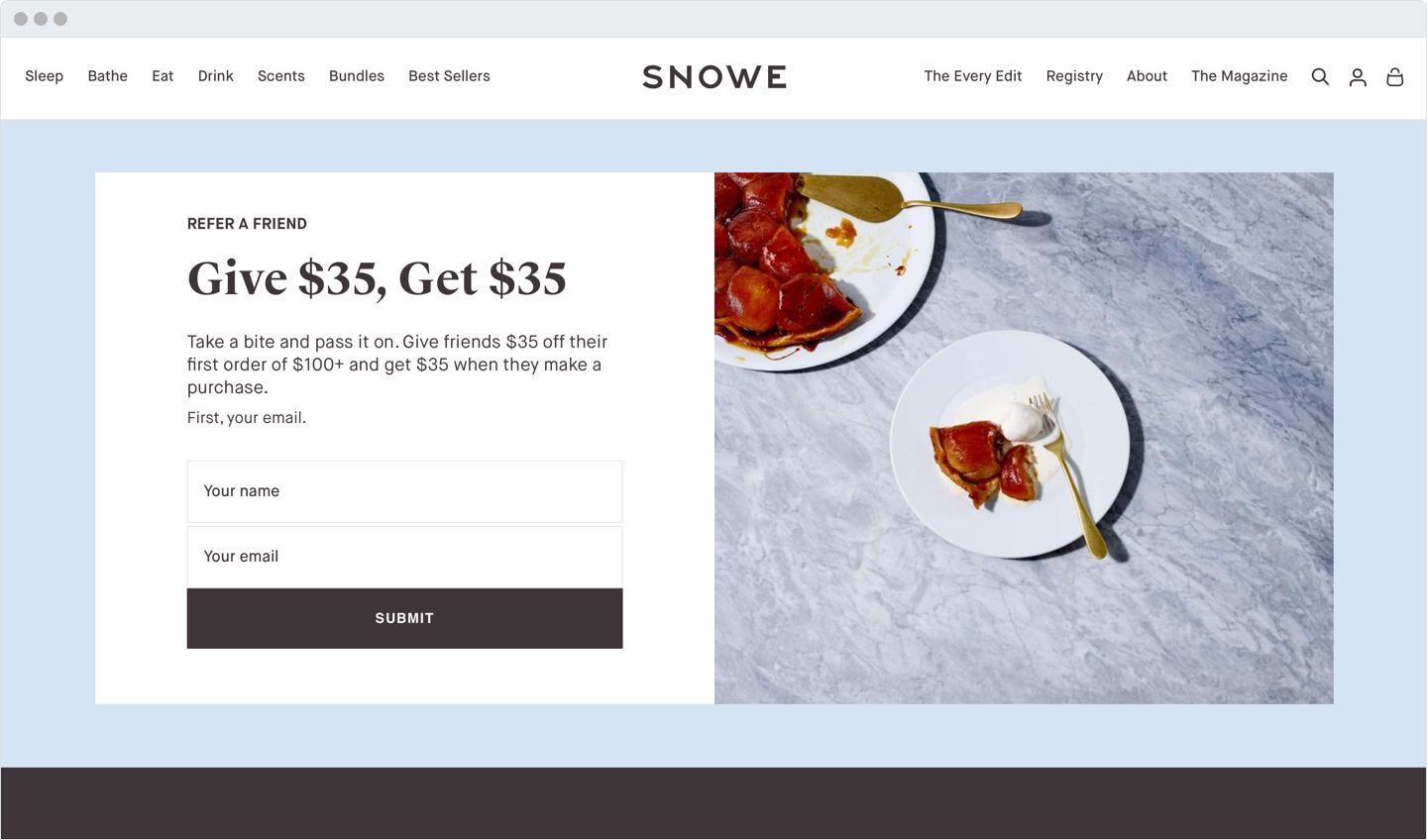
Snowe’s Referral Flow - Step #2
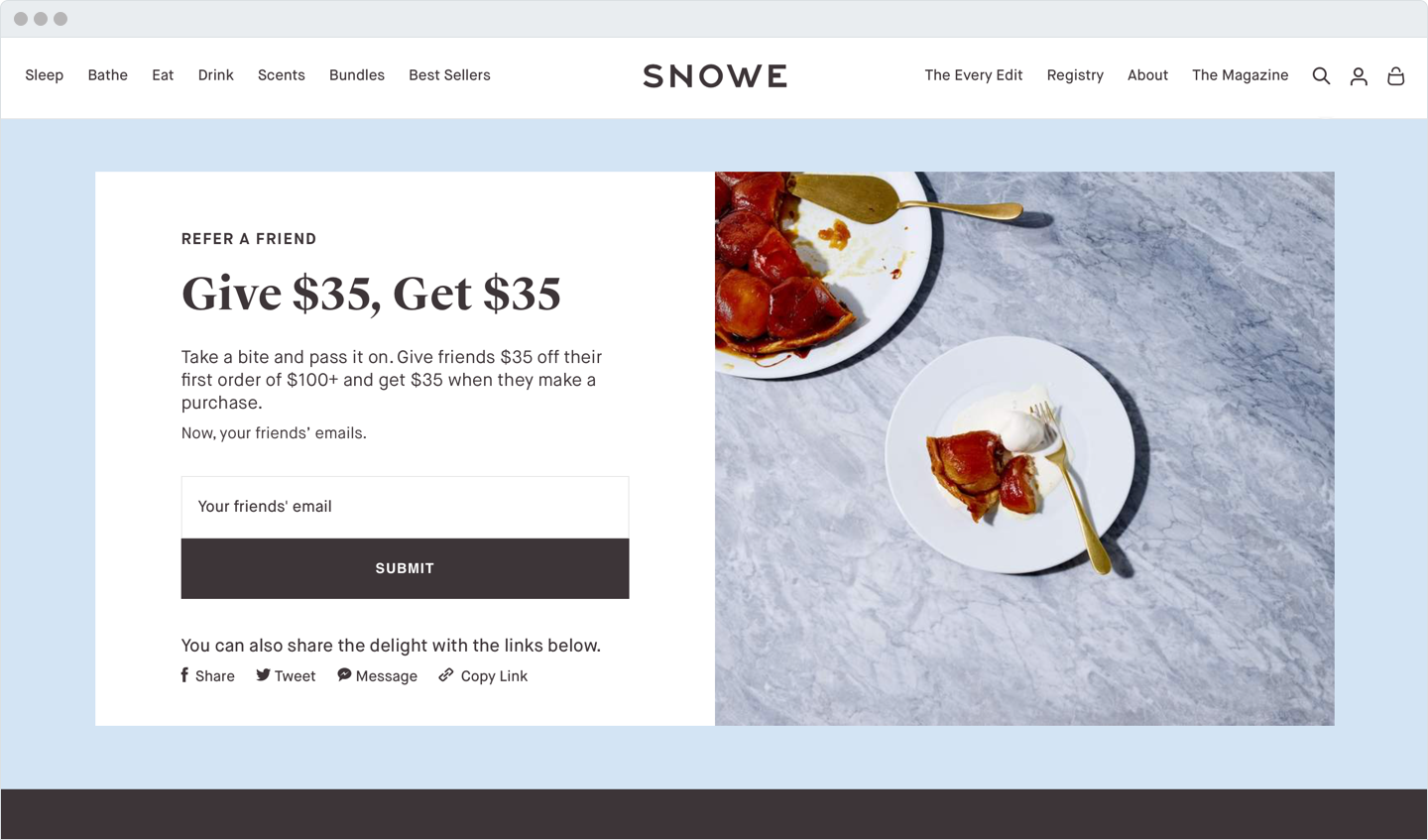
Snowe’s Referral Flow - Step #3

Tips to optimise the referral experience
The process of making a referral should be straightforward and personal. Here are some suggestions:
- split up the process into small steps with each requiring little input only (see the three-step referral flow of Snowe below)
- ask for as little information as possible (consider the data you really need and follow personal data minimisation best practice )
- set up pre-composed default messages that go together with the referral code (see more on this in the section below)
- add a simple “copy to clipboard” option that can be used to share the link manually
- provide different channel options to share the link (the most prominent channels among your target group should come first)
Default referral messages (that people can adjust)
When someone clicks or taps on one of the sharing links we recommend using a default message that the person can then change if necessary before sharing. Use different default messages that are optimised for the different sharing channels you include.
Any default message should include a few friendly words, the name of the brand, the referral link, and some detail about the reward for the person who is referred. Creating a good message will increase the likelihood that someone will click on the link and that a successful referral will occur.
Here are some ideas for default messages
Hey, I think you’ll like this. Do you know [your brand]? Use my referral code to get a discount on your next purchase [referral-code] via @[your brand] - Happy shopping ☺️
I love my [your product] from [your brand]. Here’s [referral reward, e.g. 20% discount] for your order. ✨ Check it out! [referral-link] via @[your brand]
Below are a few examples of messaging from other referral programs we like:
Away’s referral program
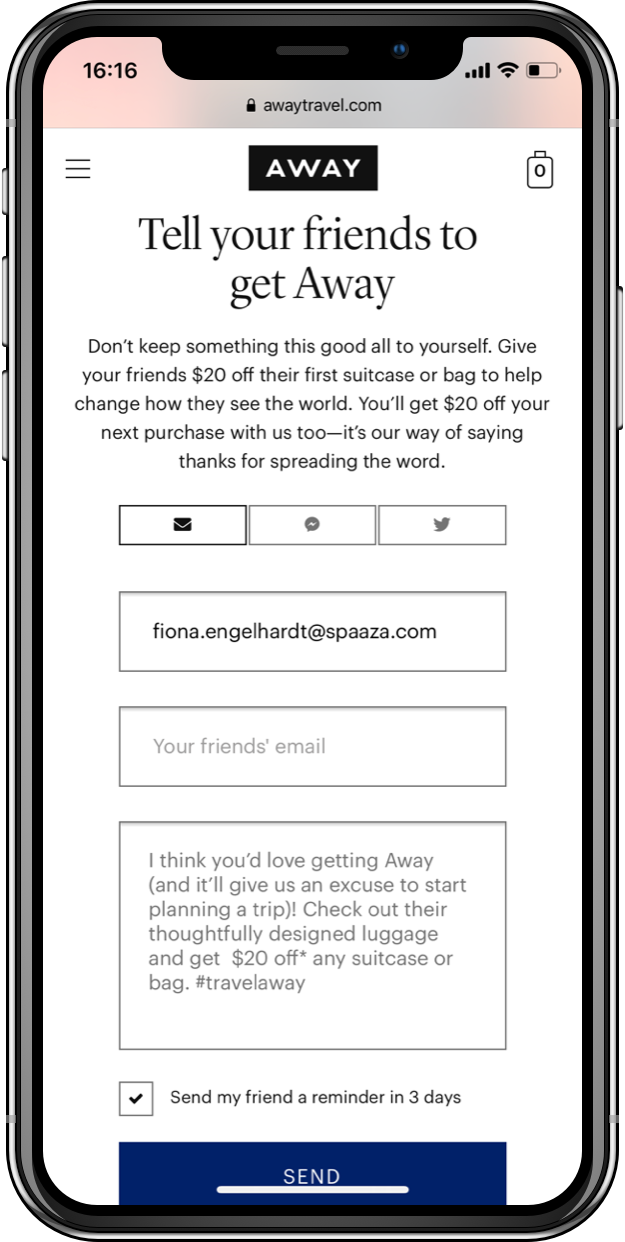
Uber Eats’ referral program

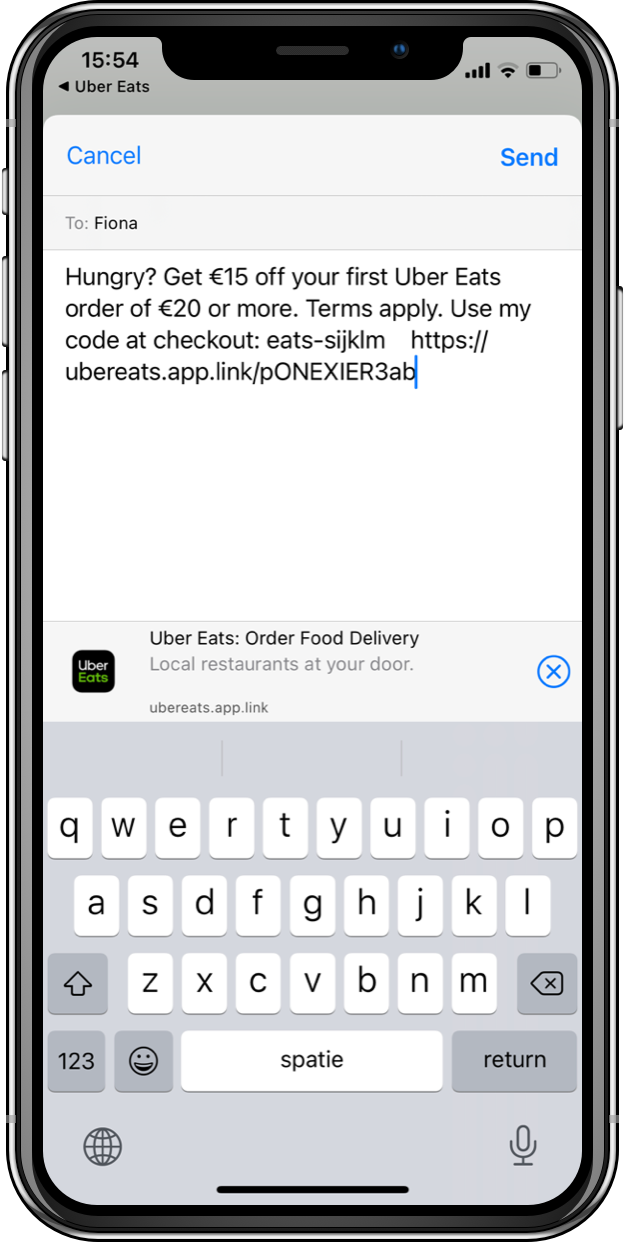
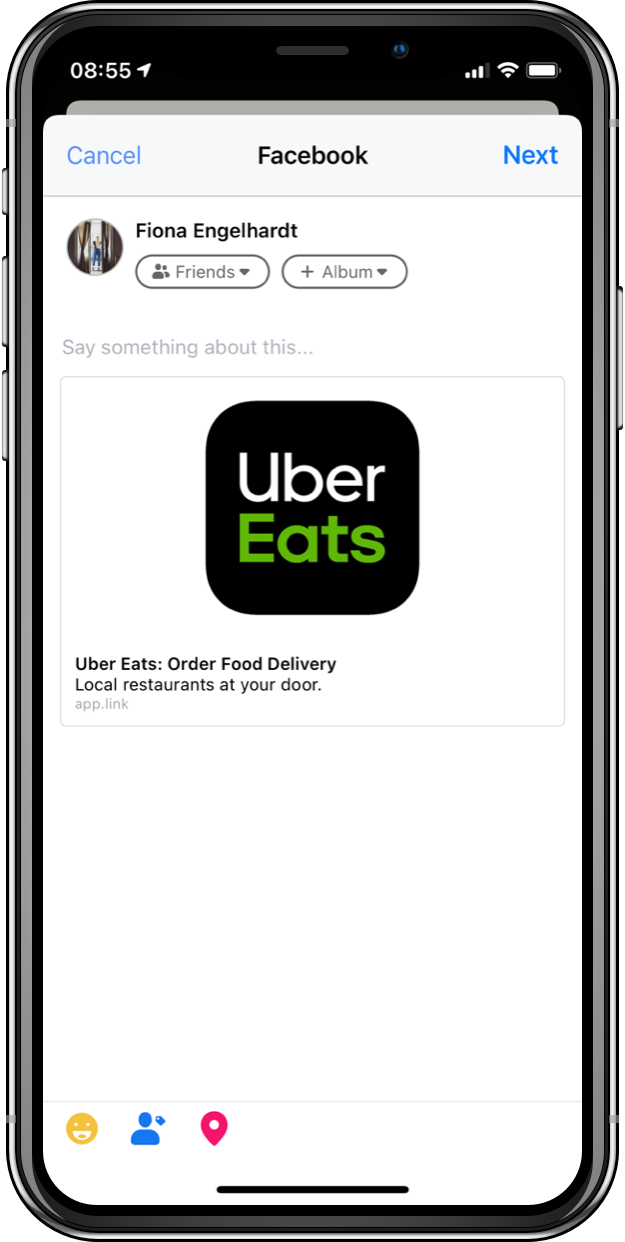
Sending a standard referral mail
Normally people are given the opportunity to alter and then send the message from their own email or social media account. You could also choose to do what AYR does and send an HTML email on the person’s behalf, without them having the option to customise the content.
UAn example from AYR
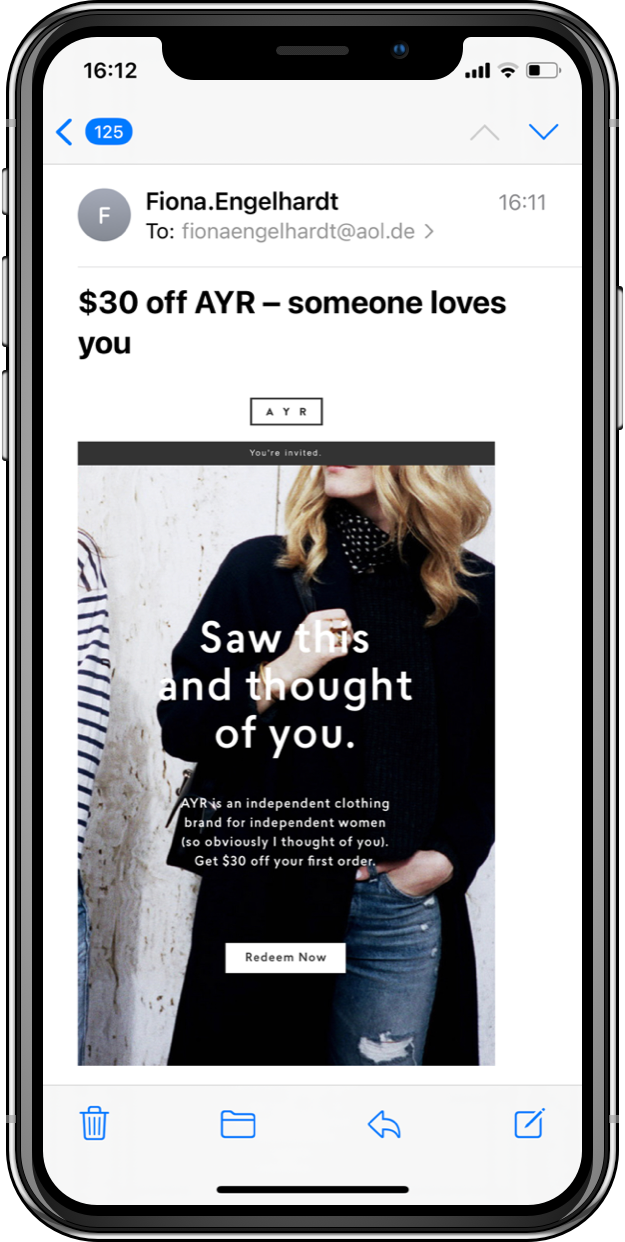
Frequently-asked-questions section
You should consider adding a FAQ section to your website or expanding an existing one with some common questions users may have about your referral program. Use this section to give a detailed explanation of how exactly the program works.
Here are some example questions that would be good to have a standard answer for:
- Who is eligible to participate?
- What are the terms and conditions to earn a reward?
- How long is a reward valid?
- Where can I use my reward?
- What can I use my reward for?
- How is the return policy affecting rewards?
Automated communication: mails, notifications and messages
We recommend setting up automatic communication to share status changes in a referral process with the relevant parties. The following events are good moments to communicate:
- when a newly referred person signs up - let the referring customer know
- when a newly referred person signs up let them know they have unlocked their reward
- when a newly referred person makes their first purchase - let the referring person know they have unlocked their reward
- when a reward earned by either party is about to expire
Spaaza can be used to trigger communication flows in third-party marketing communication systems when certain referral events occur. Contact a member of our support team for more details about how to set these up.
Viewing and redeeming rewards
With Spaaza it’s possible to select from a variety of different incentives that will be issued as rewards to both referring and referred parties. For example you may choose to issue a discount voucher or points to one or both parties.
If you are using one of Spaaza e-commerce extensions or apps then any rewards earned should show up automatically when the customer is logged in. For example rewards are often shown on the person's account page. This should also be the case for other third party e-commerce or app systems that have built integrations with Spaaza.
In the case of monetary vouchers being issued these should be applied automatically at checkout as part of Spaaza’s Smart Voucher](https://www.spaaza.com/smart-vouchers) solution. It is typically not necessary to enter a voucher code to apply a Spaaza voucher.
If your physical store Point of Sale systems are connected to Spaaza then any vouchers issued as a result of a referral will also be able to be redeemed in physical stores.
For more information about optimising the voucher redemption experience please see our integration guides or contact a member of our team.
promoting your referral program
There are lots of ways to promote your referral program by using existing space on your website, apps, emails, and other digital and physical assets.
Promoting the referral program on your website
- In the navigation menu
- In a drop down menu
- A pop-up message on the website
- Next to the items of the webshop
- A link in the footer of your website/app
- A link on to the account sign-in page
- The account space/ loyalty member space
- On your blog
- In your FAQ section
- Pop-up windows
Below are a some examples showing how AirBnB promotes their referral program across their website:
A signed up AirBnB member sees a promotion for the referrals in a dedicated tab on the account menu
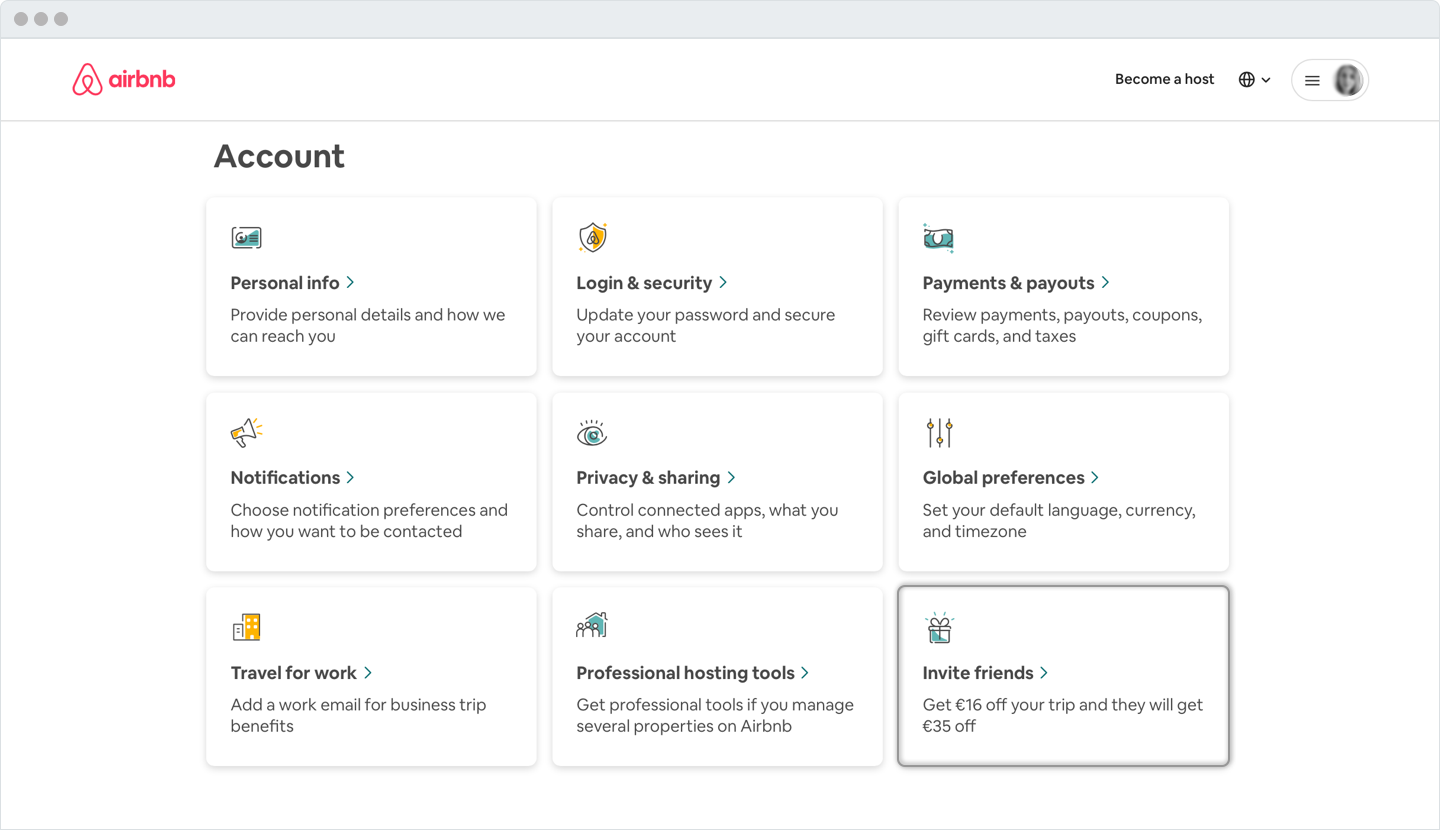
AirBnB includes a link to their referral program in their website footer

Promoting the referral program in your app
If you have an app many of the same suggestions for promoting referrals on a webshop can also be applied, for example including content in navigation menus, footers, and account views.
Tarte Cosmetics has several links in the app that leads to the referral page
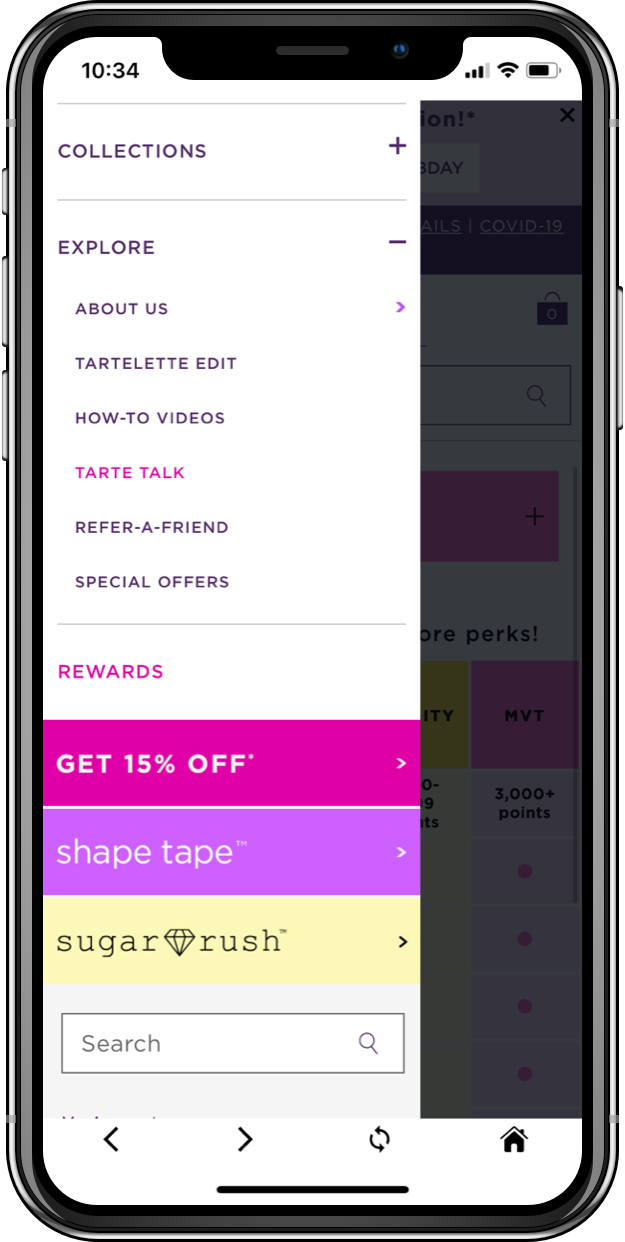
Tarte’s referral page in their app

Tesla’s referral program is also part of their app
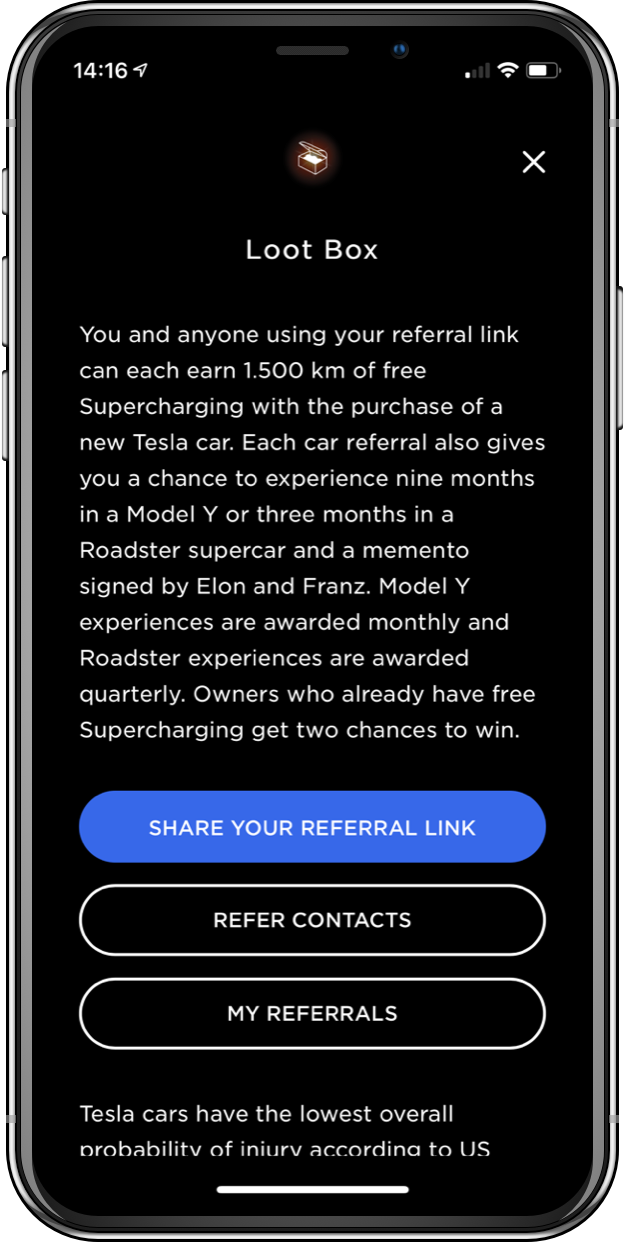
Promoting the referral program in your existing emails
The referral program can be promoted generically in your existing email communication.
- In the email footer in promotional emails to customers
- In specific emails to promote the program
- In your newsletter
- On a (digital) receipt
- In emails of order confirmations and order updates
As an additional step you could personalise this content and include the recipients specific referral code and sharing links directly on the emails the receive.
Spaaza has API and webhook tools that can be used to trigger emails, push notifications or other forms of communication based on trigger activities. Talk to a member of our team about how best to set this up for your brand.
Promoting the referral program via social media
Use social media platforms to spread the word about your referral program. This could be via content, social ads, or storytelling.
Use the general best practices for social media marketing when you want to use social media for promoting your referral program.
You could create an Instagram story to highlight the refer-a-friend process (for example explaining the single steps), or to share a short video via YouTube.
If you want to go beyond the organic reach, you can also use paid promotions to spread the word about your referral program.
Pediped regularly promotes their referral program via social media channels like Instagram
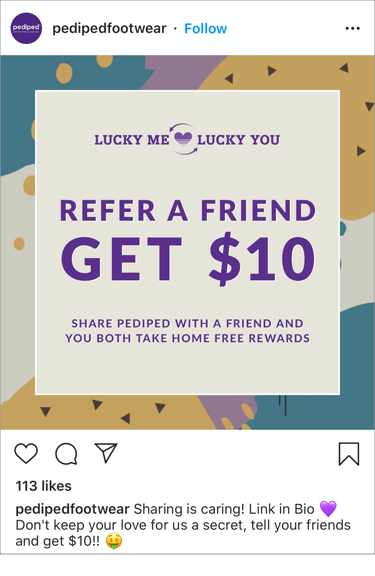
Using gamification
There are many ways to implement gamification on a referral program. One great way to engage customers is with a leaderboard. Show a leaderboard to your customers, incentivising them to invite more friends. Maybe the top 3 get an extra reward? Alternatively, you can also share only their own referral history with them.
Tarte Cosmetics showcases the customer referral history. They also tell users how many friends have already used the referral code.

Offline promotion
If you also have physical stores you should consider offline promotions for your referral program.
In-store promotions
Let offline shoppers know that they can earn a reward when they invite their friends:
- on the receipt
- on banners/posters (consider the friction for your customer to search your referral program, e.g. use a QR code)
- via a signup/referral help desk in store
Inform staff
There’s no better way to reach customers than via your own staff. This is why also store staff should at least know about the referral program and where customers can find further information.
Or maybe you even set up an employee referral program, where brand staff is able to share a referral code with customers.